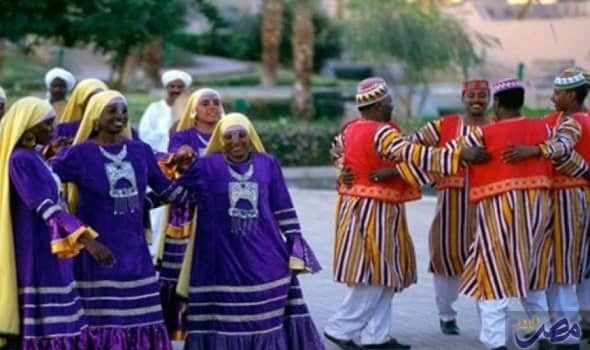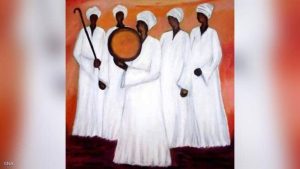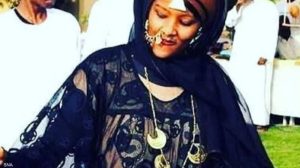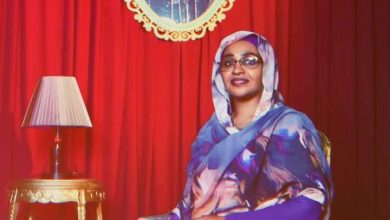Nubia of Egypt and Sudan : Social Legacy from Aragids to Jargars

Agencies – Sudan Events
To the tunes of the “tambourine” and “tanbur” instruments, the Nubians of Egypt and Sudan sway in their collective dances of “aragids” and “hula-hula” like fish swaying in the depths of the Nile. They line up just as its waves line up. The newly drawn borders did not affect the historical legacy of two brothers who separated, so one of them resided in southern Egypt. The other lived in northern Sudan.
You hear them singing, “My position is as high as a dam, in hardship, with the outstretching of the hand… Nubians are the most important thing for my country, I flaunt my whiteness, I am Nubian,” boasting about the specificity of their cultural and social heritage; You can almost smell the shared history flowing like the waters of the Nile between the Nubians of Egypt and Sudan.
Cultural and social legacies still bind the two sides. Starting from Kalabsha, Balana, and the villages of the First Cataract in southern Egypt, passing through Abu Simbel on the border between the Egyptian and Sudanese sides, all the way to Halfa, Al-Sukot, Al-Mahas, the Second Cataract, and Dongola in northern Sudan.
Cross-border heritage:
The Sudanese researcher, Samir Bokab, from the village of “Sarkimatu” south of Wadi Halfa in Nubia, Sudan, emphasizes the specificity of Nubian dance and the identical rhythms between the Egyptian and Sudanese sides, which rely mainly on the tambourine and the keyboard or tanbour, despite the slight changes brought about by the displacement.
“Bukab” adds that the Nubians of Egypt and Sudan created 11 rhythms from the tambourine, such as “humbi”, “glacier”, “daleeb”, “jabodi”, “fiji”, “sherry” and “kumba”, while the kaiser or “tanbour” instrument is similar. Semsimiya, located in the Egyptian Ismailia Governorate, is famous for its pentatonic rhythm.
From the village of Qarsha in Nubia, Egypt, the Egyptian poet, Ahmed Issa Al-Qarshawi, confirms that the men’s “Hula Hula” dance is a distinctive feature of the Treasure tribes in Nubia in Egypt and the “Danqlawians” in Nubia in Sudan.

According to the Sky News Arabia website, there are commonalities between the Fadija tribes in Nubia, Egypt, and the Halfawiyya, Sukkot, and Mahas tribes in northern Sudan, as these tribes share in the “ Aragids” dances in which men and women alike participate.
A language that refuses to disappear:
Ikhlas Abdel Latif, Deputy Director of the Museums Department at the Sudanese Ministry of Antiquities, describes the relationship between the Nubians of Egypt and Sudan as eternal, adding that this relationship is supported by ethnic and racial overlap, and lineage ties that still unite the two sides, pointing out that the Nubians of Egypt are divided into the Fadiga and Knouz tribes, While the Nuba tribes of Sudan are divided into ScottMahs, Halfawiyya and Danglawiyah.

Dr. Mohamed Omar, professor of the Nubian language at the Egyptian Academy of Arts, and founder of the “Nubi” application, confirmed the role of the language that the Nubians used orally in consolidating their legacy on many levels. It has branched phonetically into four languages with slight differences.



